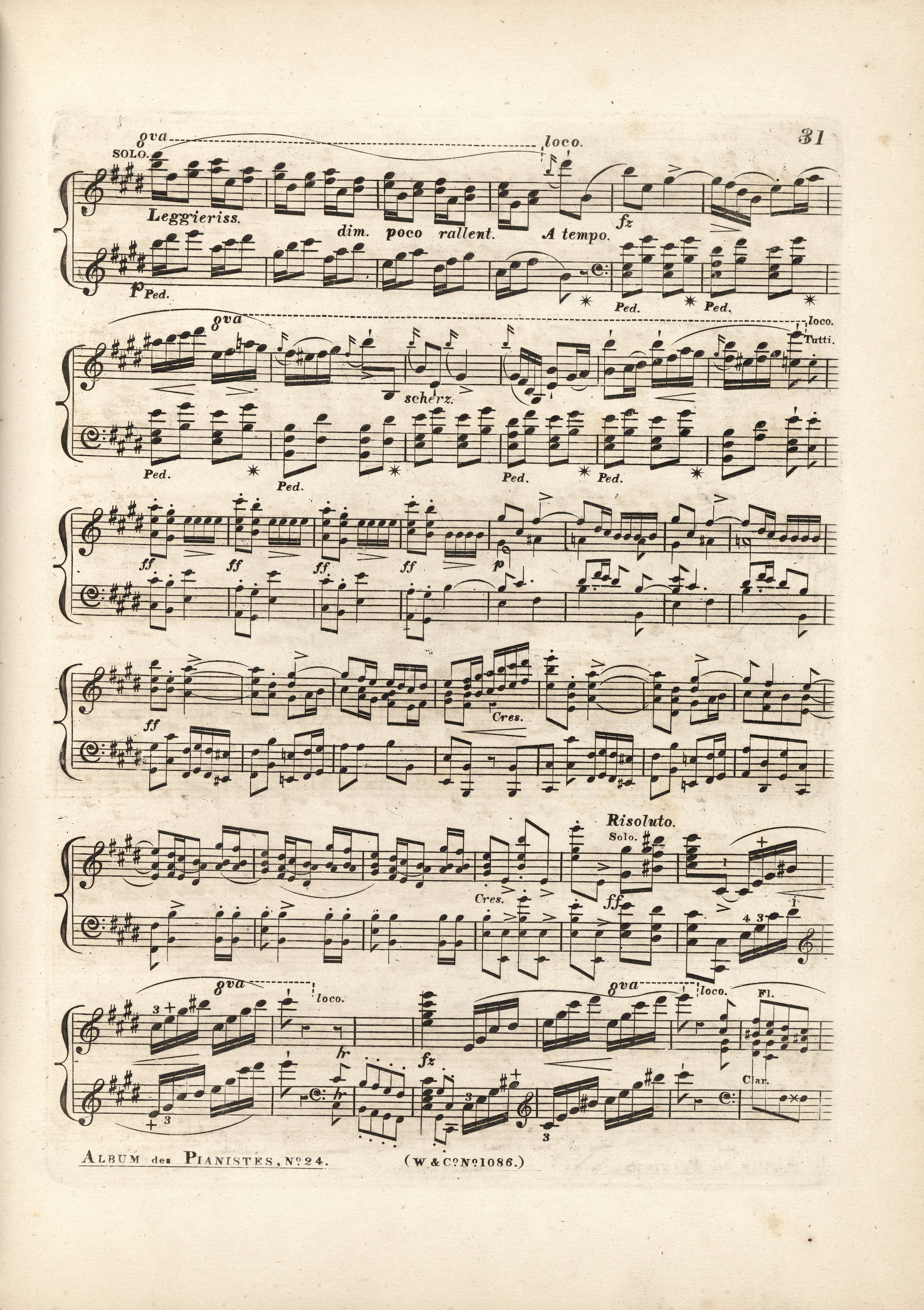Op. 2, Variations in B♭ major
Op. 10, 12 Etudes
Op. 11, Concerto in E minor
Op. 21, Concerto in F minor
Op. 22, Polonaise in E♭ major
Op. 24, 4 Mazurkas
Op. 25, 12 Etudes
Op. 26, 2 Polonaises
Op. 27, 2 Nocturnes
Op. 28, 24 Preludes
Op. 30, 4 Mazurkas
Op. 35, Sonata in B♭ minor
Op. 50, 3 Mazurkas
Op. 63, 3 Mazurkas
Op. 64, 3 Waltzes
(Op. 4), Sonata in C minor
Compositions
0




Op. 11, Concerto in E minor, Mvt III
EE1
compare
Main text
FE
- French edition
FE1
- First French edition
FED
- Dubois copy
FEFo
- Forest copy
FEH
- Hartmann copy
FEJ
- Jędrzejewicz copy
FES
- Stirling copy
GE
- German edition
GE1
- First German edition
GE2
- Corrected impression of GE1
GE2a
- Altered impression of GE2
GE3
- Second German edition
EE
- English edition
EE1
- First English edition
EE2
- Corrected impression of EE1
EE3
- Revised impression of EE2
According to us, the missing staccato marks over the quavers in the 1st half of the bar must be considered an inaccuracy of notation:
- if Chopin had wanted a different articulation in this place, he would have certainly marked the change, which appears on the seventh appearance of this motif;
- all the remaining markings – slurs, accents, dynamic hairpins and even wedges in bars 93 and 95 were included (in an identical or very similar form). Therefore, an intentional simplification of notation is out of the question.
Compare the passage in the sources »
category imprint: Editorial revisions
notation: Articulation, Accents, Hairpins



